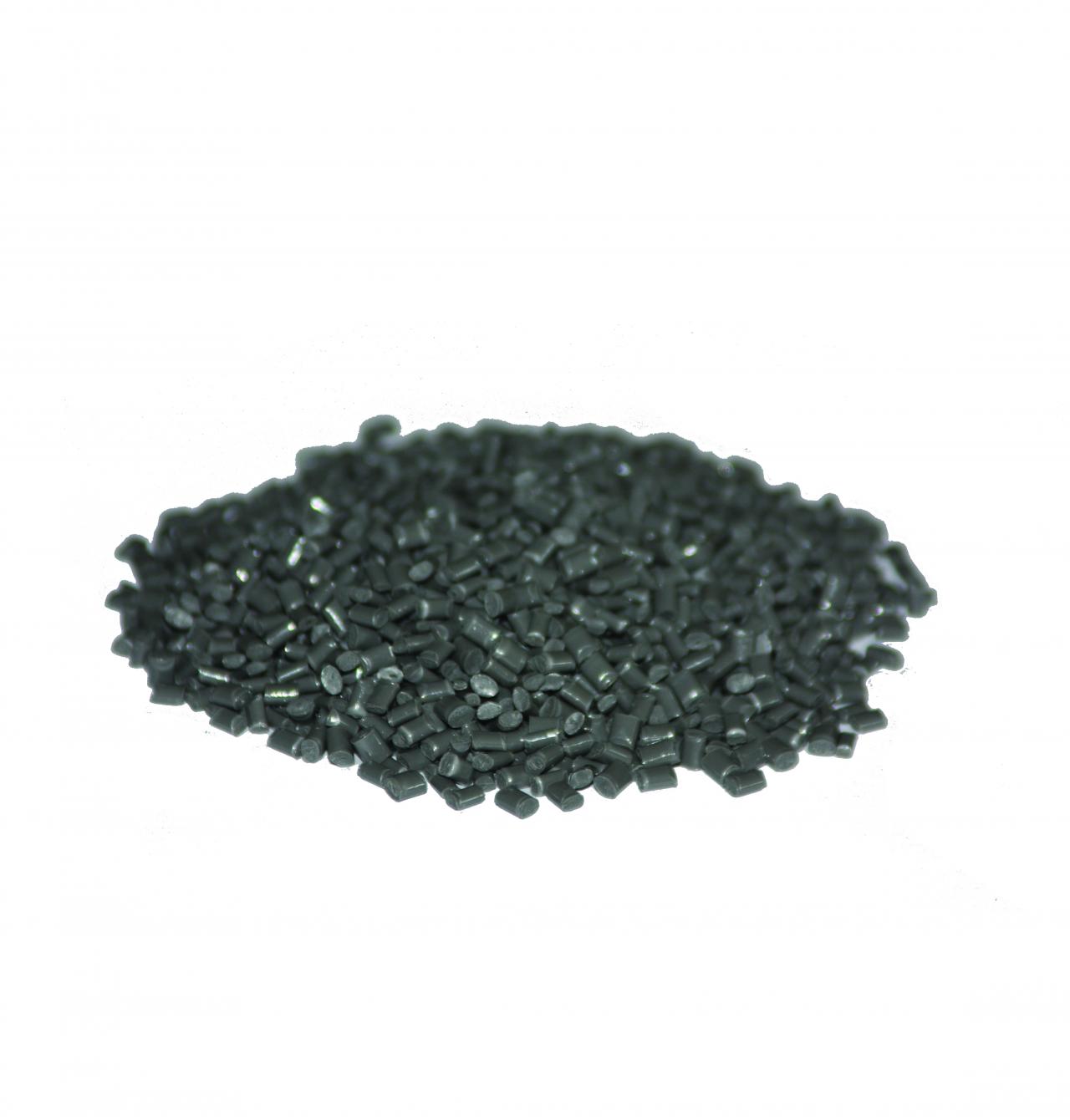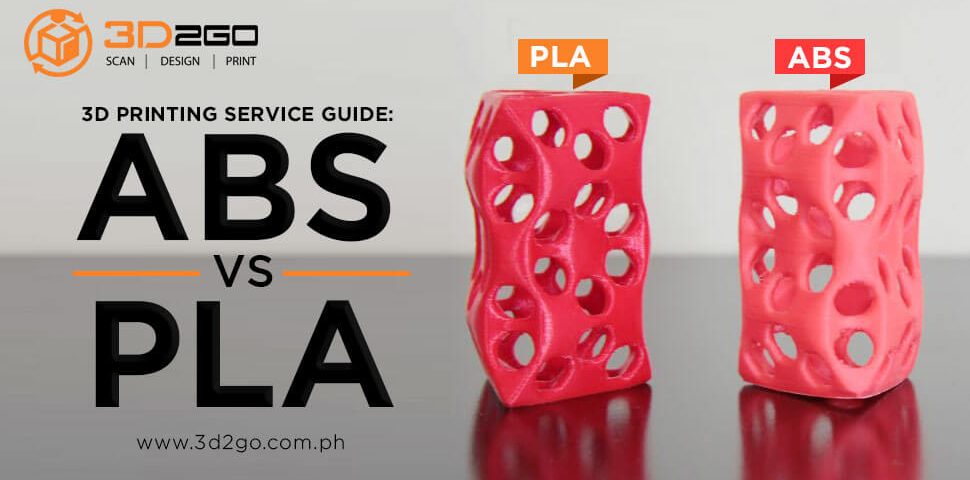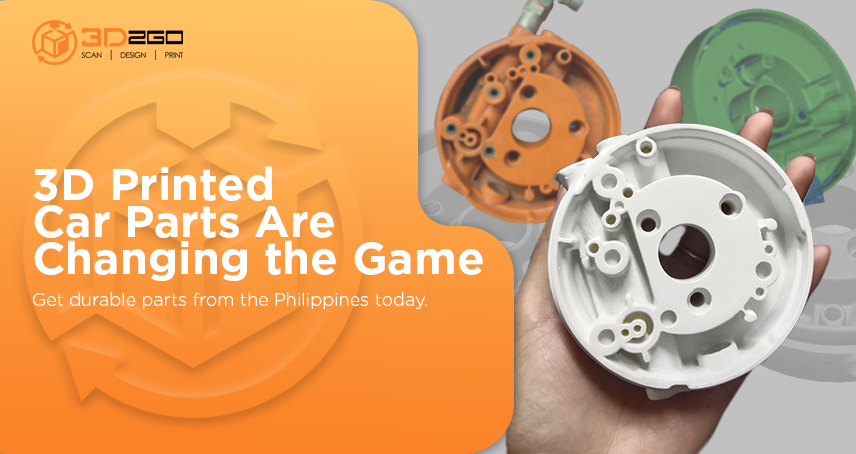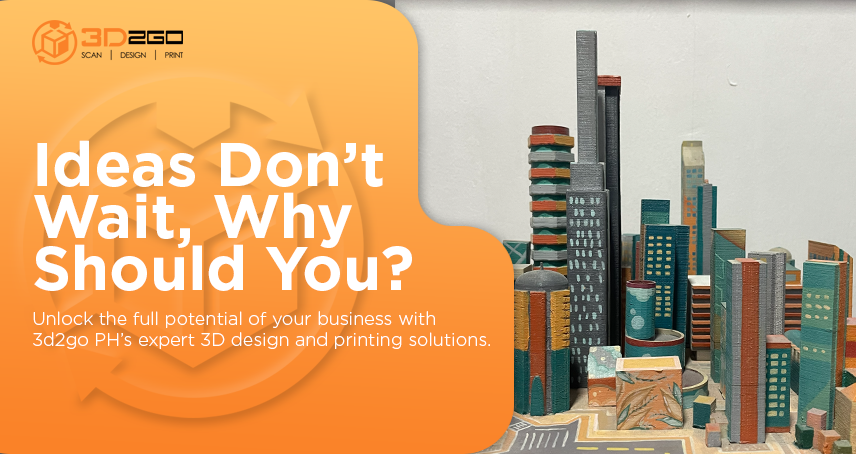
Anime Themed 3D Cake Topper For Your Otaku Wedding Dream
June 6, 2022
What Basic Material Should You Use For 3D Printing?
June 7, 2022
Are you looking to start that 3D printing service? Here’s a quick guide about the ABS and PLA filaments.
3D printing opens the door to limitless possibilities. From prosthetics to gaming, there’s one common denominator of it all – filaments.
Filaments are thermoplastics materials that can be easily shaped and molded. What’s unique about it is: it solidifies when cooled and melts when exposed to high temperature.
With 3D printing, there are several filaments you can choose from; but the most commonly used are ABS and PLA materials.
In this article, we will discuss the similarities and differences between ABS and PLA filaments.
3D Printer Filaments Comparison
To understand this, let us first answer the question: what are ABS and PLA filaments?
ABS (Acrylonitrile Butadiene Styrene) is a thermoplastic, well known in the molding industry. People use it in LEGO, electronic housings, and automotive bumper parts.
PLA (Polylactic Acid) is a biodegradable (under the right conditions) thermoplastic; it comes from renewable resources such as cornstarch or sugarcane. It is one of the most popular bioplastics, used for many applications ranging from plastic cups to medical implants.
Similarities and Differences of PLA and ABS:
As mentioned above, ABS and PLA are both durable plastic materials. That is why it’s the perfect filament for prototyping applications. And both are suitable for any FDM 3D printer.
Since the two filaments are plastic, it also means that the materials melt when exposed to high temperatures. Although, not right away. It takes time to really turn these two things into a liquid substance.
Furthermore, ABS and PLA are not the same.
PLA is biodegradable. It isn’t suitable for making objects that will be outside or exposed to moisture. Over time rain, humidity or dampness will cause the PLA to melt or dissolve.
PLA can rapidly lose its structural integrity and can begin to droop and deform, particularly if under load, as it approaches 60°C.
One of the best things about PLA is that you can use it without a heated printer bed, unlike ABS. That is because PLA doesn’t warp as easily as ABS and other thermoplastics do.
Because you will get less warping with PLA compared to ABS, you don’t have to monitor your print as much or worry about having a high failure rate.
On the other hand, ABS is a very popular filament for making objects that need to be durable and tough. Items made with ABS will generally last much longer than 3D things made with PLA, especially in functional applications. Such as when used to make electronics or mechanical parts.
Over the long term, ABS degrades in the sun, so keep in mind that it isn’t always suitable for making objects that will spend a lot of time outside.
But unlike PLA, ABS is mostly water-resistant and can be used to make objects that get wet often.
In summary, PLA is ideal for 3D prints where aesthetics is a priority. It is because of its lower printing temperature. It is smoother to use and to print with, so therefore it is better suited for parts with fine details.
ABS is best suited for applications where strength, elasticity, and thermal stability are required.
Get that 3D Printing Machine Ready!
Ready to start your 3D journey? We would love to help you!
3D2Go is the only one-stop-shop for everything 3D printing in the Philippines. We offer end-to-end full-service that guarantees a top-quality end product.
Not only that, but we also supply 3D Printers if you want to print your own ideas as well.






